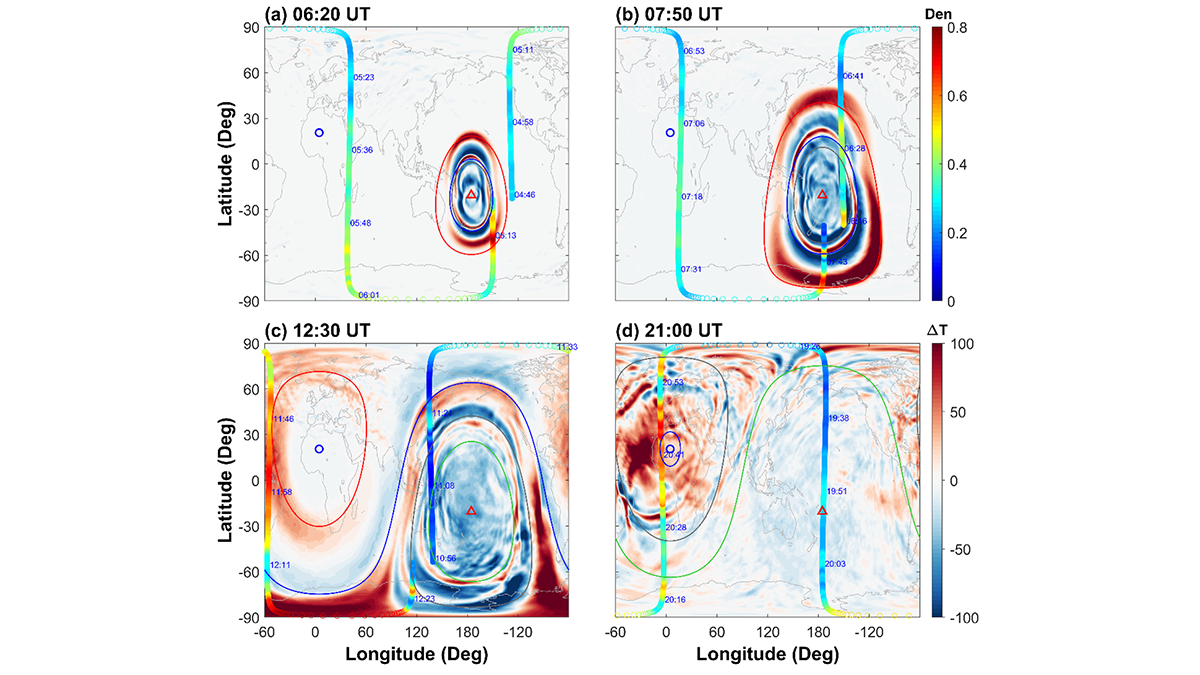Editors’ Highlights are summaries of recent papers by AGU’s journal editors.
Source: AGU Advances
The massive 2022 eruption of the Hunga Tonga-Hunga Ha‘apai volcano was one of the most powerful explosions ever recorded. It blasted ash and gas high into the sky, reaching heights over 50 kilometers (above most clouds and weather), and sent waves rippling through Earth’s atmosphere. These waves traveled all the way to the upper atmosphere—the netherworld where satellites orbit—causing unexpected disruptions in this region.
Using data from satellites and computer models, Li et al. [2025] investigate why these waves spread so far. They focus on two possible causes: Lamb waves (pressure waves that “hug” Earth’s surface) and secondary gravity waves (new waves created when initial eruption waves break apart higher up). The authors find that secondary gravity waves, with their faster speeds and larger magnitudes, matched the satellite observations best. This means they were the key driver of the upper atmosphere’s dramatic changes.
These findings matter because they reveal how geological events on Earth’s surface, like volcanoes, can “talk” to the edge of space. Understanding this link helps improve satellite safety and weather predictions in space, which is critical as humans rely more on satellites for communication, navigation, and climate monitoring.
Citation: Li, R., Lei, J., Zhang, S.-R., Liu, F., Chen, X., Luan, X., & Meng, X. (2025). Were gravity waves or lamb waves responsible for the large-scale thermospheric response to the Tonga eruption? AGU Advances, 6, e2024AV001470. https://doi.org/10.1029/2024AV001470
— Binzheng Zhang, Editor, AGU Advances

